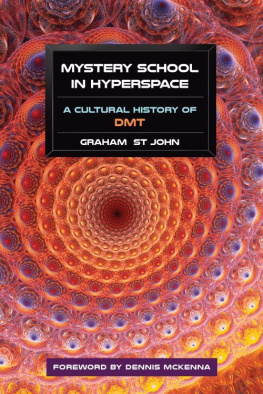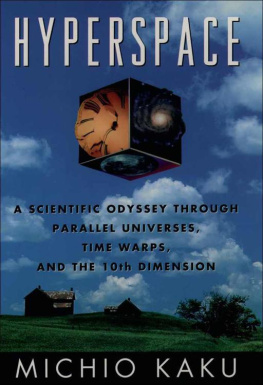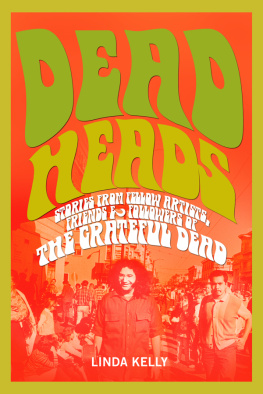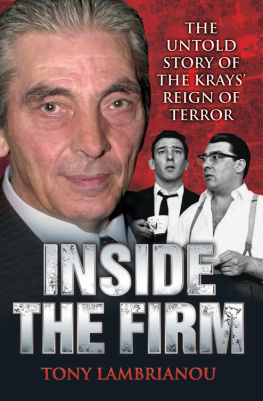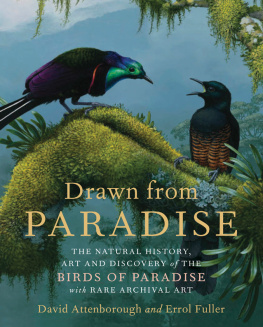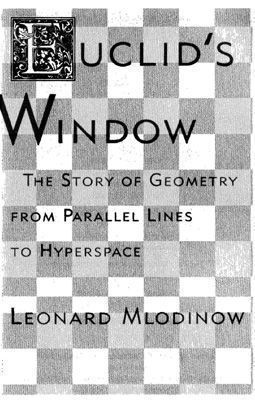Graham St John - Mystery School in Hyperspace: A Cultural History of DMT
Here you can read online Graham St John - Mystery School in Hyperspace: A Cultural History of DMT full text of the book (entire story) in english for free. Download pdf and epub, get meaning, cover and reviews about this ebook. year: 2015, publisher: EVOLVER EDITIONS, genre: Romance novel. Description of the work, (preface) as well as reviews are available. Best literature library LitArk.com created for fans of good reading and offers a wide selection of genres:
Romance novel
Science fiction
Adventure
Detective
Science
History
Home and family
Prose
Art
Politics
Computer
Non-fiction
Religion
Business
Children
Humor
Choose a favorite category and find really read worthwhile books. Enjoy immersion in the world of imagination, feel the emotions of the characters or learn something new for yourself, make an fascinating discovery.
- Book:Mystery School in Hyperspace: A Cultural History of DMT
- Author:
- Publisher:EVOLVER EDITIONS
- Genre:
- Year:2015
- Rating:3 / 5
- Favourites:Add to favourites
- Your mark:
Mystery School in Hyperspace: A Cultural History of DMT: summary, description and annotation
We offer to read an annotation, description, summary or preface (depends on what the author of the book "Mystery School in Hyperspace: A Cultural History of DMT" wrote himself). If you haven't found the necessary information about the book — write in the comments, we will try to find it.
DMT has appeared at crucial junctures in countercultural history. William Burroughs was jacking the spice in Tangier at the turn of the 1960s. It was present at the meeting between Ken Keseys Merry Pranksters and Tim Learys associates. It guided the inception of the Grateful Dead in 1965. It showed up in Berkeley in the same year, falling into the hands of Terence McKenna, who would eventually become its champion in the post-rave neo-psychedelic movement of the 1990s. Its indole vapor drifted through Portugals Boom Festival and has been evident at Nevadas Burning Man, where DMT has been adopted as spiritual technology supplying shape, color, and depth to a visionary art movement. The growing prevalence of use is evident in a vast networked independent research culture, and in its impact on fiction, film, music and metaphysics. As this book traces the effect of DMTs release into the cultural bloodstream, the results should be of great interest to contemporary readers.
The book permits a broad reading audience to join ongoing debates in studies in consciousness and theology where the brain is held to be either a generator or a receiver of consciousness. The implications of the spirit molecule or the brains own psychedelic among other theories illustrate that DMT may lift the lid on the Pandoras Box of consciousness.
Features a foreword by Dennis McKenna, cover art by Beau Deeley, and thirty color illustrations by various artists, including Alex Grey, Android Jones, Martina Hoffmann, Luke Brown, Carey Thompson, Adam Scott Miller, Randal Roberts, along with Jay Bryan, Cyb, Orryelle Defenestrate-Bascule, Art Van Dlay, Stuart Griggs, Jay Lincoln, Gwyllm Llwydd, Shiptu Shaboo, Marianna Stelmach, and Mister Strange.
Regarded as the nightmare hallucinogen or celebrated as the spirit molecule, labelled psychotogenic or entheogenic, considered a dangerous drug or the suspected X-factor in the evolution of consciousness, DMT is a powerful enigma. Documenting the scientists and artists drawn into its sphere of influence, navigating the liminal aesthetics of the breakthrough experience, tracing the novum of hyperspace in esoteric and science fiction currents, Mystery School in Hyperspace excavates the significance of this enigmatic phenomenon in the modern world.
Exposing a great many myths, this cultural history reveals how DMT has had a beneficial influence on the lives of those belonging to a vast underground network whose reports and initiatives expose drug war propaganda and shine a light in the shadows. This conversation is highly relevant at a time when significant advances are being made to lift the moratorium on human research with psychedelics.
From the Trade Paperback edition.
Graham St John: author's other books
Who wrote Mystery School in Hyperspace: A Cultural History of DMT? Find out the surname, the name of the author of the book and a list of all author's works by series.

